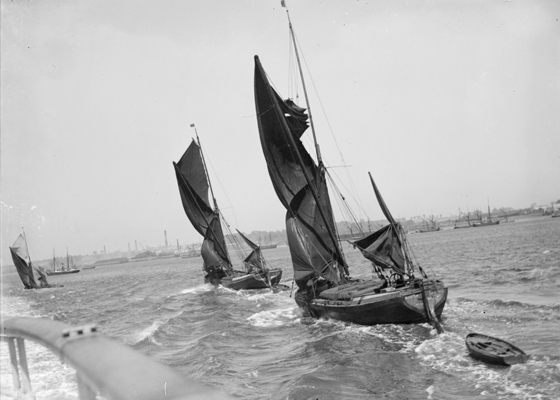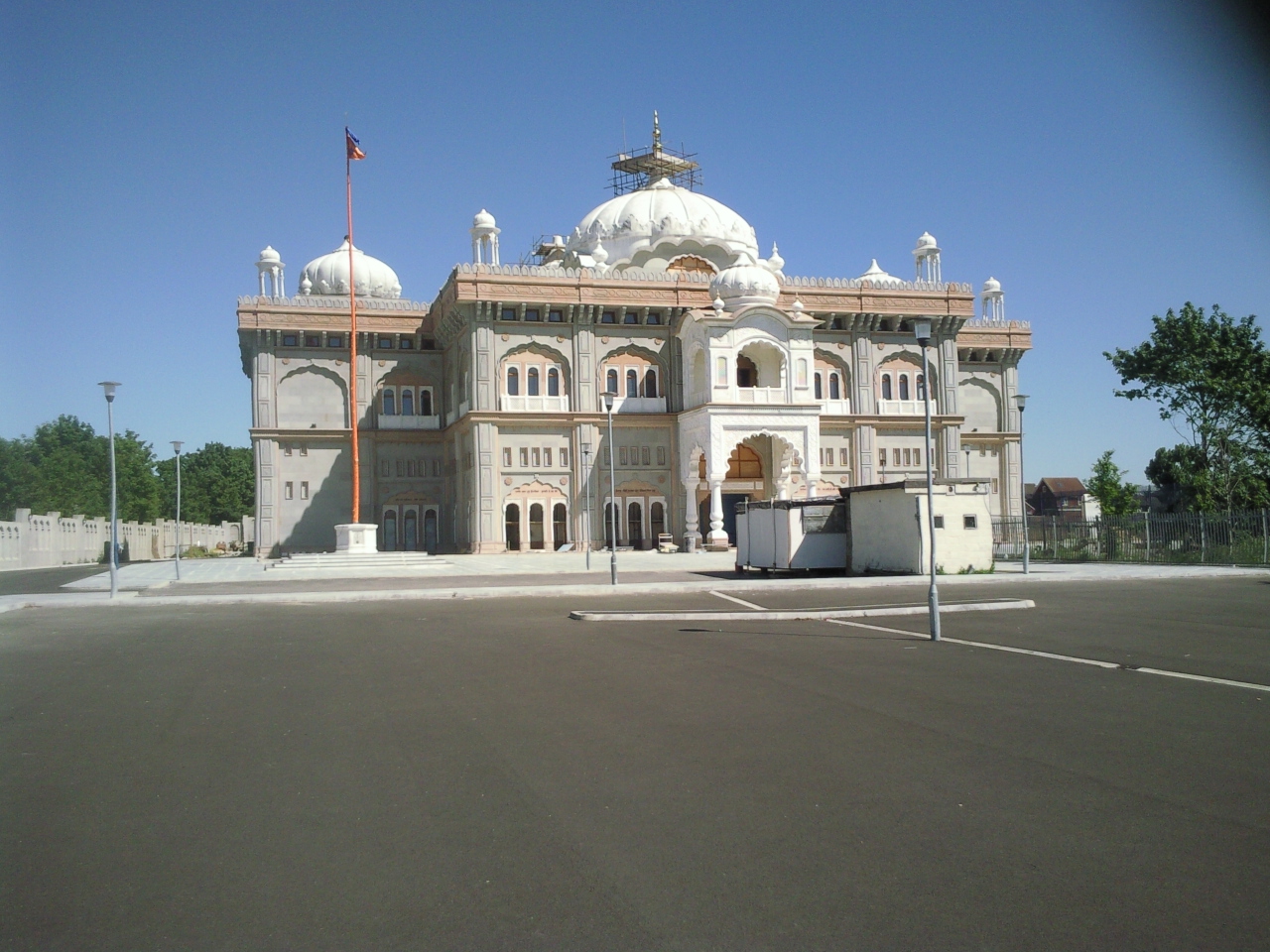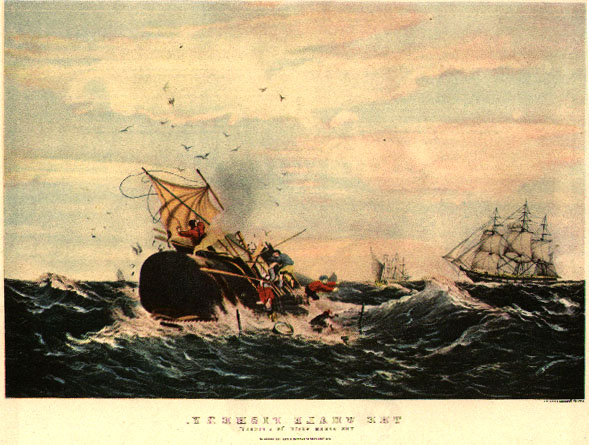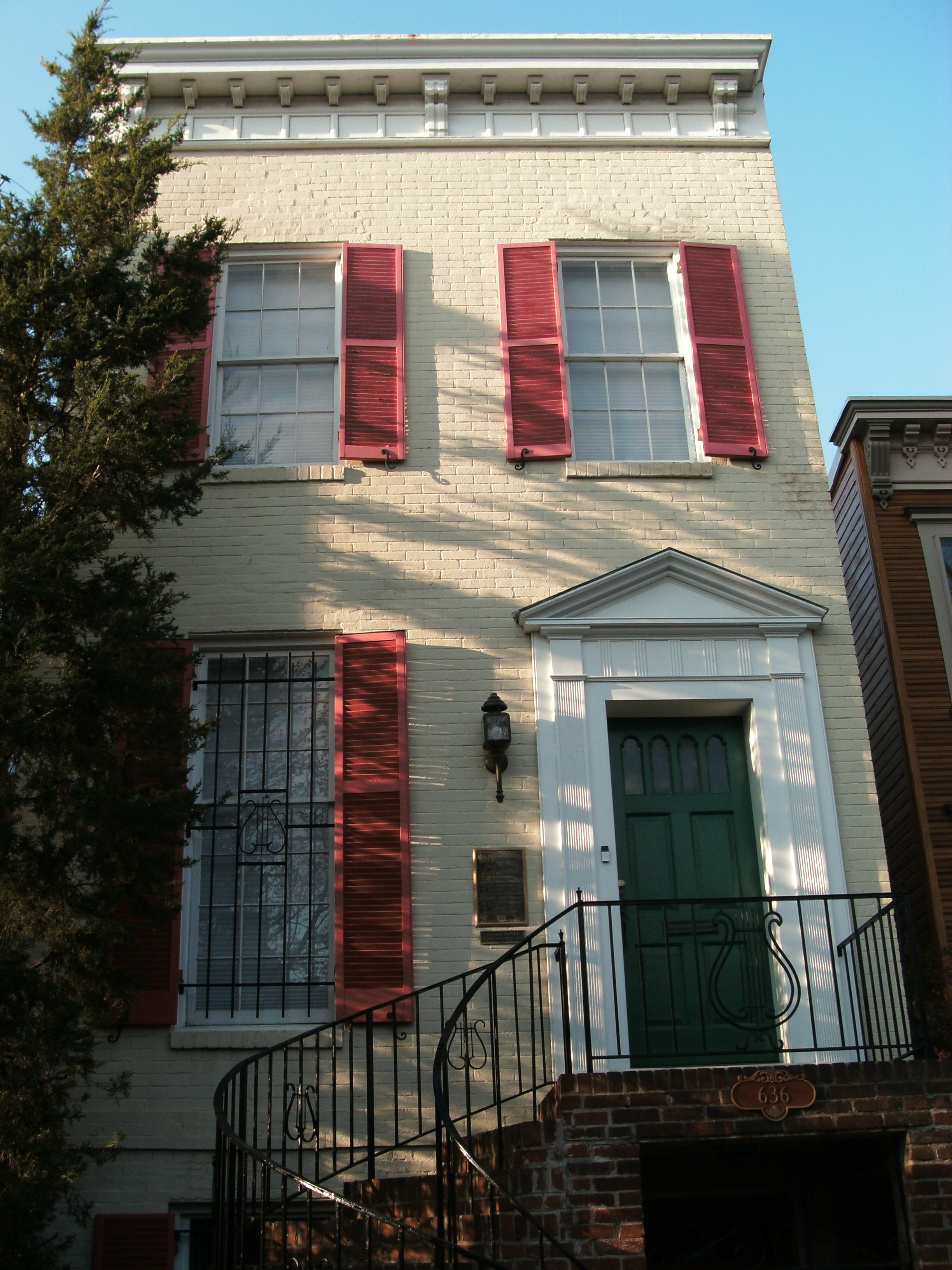|
Northfleet F
Northfleet is a town in the borough of Gravesham in Kent, England. It is located immediately west of Gravesend, and on the border with the Borough of Dartford. Northfleet has its own railway station on the North Kent Line, just east of Ebbsfleet International railway station on the High Speed 1 line. The area Northfleet's name is derived from being situated on the northern reach of what was once called the River Fleet (today known as the Ebbsfleet River). There is a village at the other end of the river named Southfleet. It has been the site of a settlement on the shore of the River Thames adjacent to Gravesend since Roman times. It was known as ''Fleote'' by the Saxons c. 600 AD, ''Flyote'' c. 900 AD, and ''Flete'' c. 1000 AD. It was recorded as ''Norfluet'' in the Domesday Book, and ''Northflet'' in 1201. By 1610 the name of Northfleet had become established. A battle took place during the Civil War at the Stonebridge over the Ebbsfleet river. Northfleet became a town in ... [...More Info...] [...Related Items...] OR: [Wikipedia] [Google] [Baidu] |
Gravesham
Gravesham ( ) is a local government district with borough status in north-west Kent, England. Its administrative centre and largest town is Gravesend, which was known as ''Gravesham'' in ancient times. Gravesham was formed on 1 April 1974 by the merger of the Municipal Borough of Gravesend with Northfleet Urban District and part of Strood Rural District, under the Local Government Act 1972. It borders the Borough of Dartford and Sevenoaks District to the west, the Borough of Tonbridge and Malling to the south, the Medway unitary authority to the east and the Thurrock unitary authority of Essex to the north, via the River Thames. Gravesham is twinned with Cambrai in Hauts-de-France, France. The present borders of Gravesham parliamentary constituency are almost the same as those of the borough. History Robert Heath Hiscock LL.B., F.S.A., Chairman of the Gravesend Historical Society, in the foreword to his book, 'A History of Gravesend' (Phillimore, 1976) wrote: :"The name G ... [...More Info...] [...Related Items...] OR: [Wikipedia] [Google] [Baidu] |
Thomas Sturge
Thomas Sturge (1787–1866) was a British oil merchant, shipowner, cement manufacturer, railway company director, social reformer and philanthropist. Family background and early life Thomas Sturge was born in 1787, one of at least ten children of Thomas Sturge the elder (1749–1825), tallow chandler and oil merchant of Newington Butts, about a mile south of London Bridge. Thomas the younger joined his father's business early in the 19th century, as did at least three of his brothers, Nathan, George and Samuel. Thomas Sturge & Sons, oil merchants and spermaceti processors operated from premises near Elephant and Castle, Newington Butts, until 1840. He was a first cousin of social reformer and philanthropist Joseph Sturge. Oil merchant and shipowner Thomas Sturge junior had become the senior partner in the business by 1816, when he began to buy ships and send them to the Southern Whale Fishery to obtain whale oil, seal oil and spermaceti for processing and sale in London ... [...More Info...] [...Related Items...] OR: [Wikipedia] [Google] [Baidu] |
Blondin
Charles Blondin (born Jean François Gravelet, 28 February 182422 February 1897) was a French tightrope walker and acrobat. He toured the United States and was known for crossing the Niagara Gorge on a tightrope. During an event in Dublin in 1860, the rope on which he was walking broke and two workers were killed, although Blondin was not injured. He married three times and had eight children. His name became synonymous with tightrope walking. Early life Blondin was born on 28 February 1824 in Hesdin, Pas-de-Calais, France.''Irish Times'', Dublin, 25 May 1861 His birth name was Jean-François Gravelet, though he was known by many other names and nicknames: Charles Blondin, Jean-François Blondin, Chevalier Blondin, and The Great Blondin. At the age of five, he was sent to the École de Gymnase in Lyon and, after six months of training as an acrobat, made his first public appearance as "The Boy Wonder". His superior skill and grace, as well as the originality of the settings ... [...More Info...] [...Related Items...] OR: [Wikipedia] [Google] [Baidu] |
John Philip Sousa
John Philip Sousa ( ; November 6, 1854 – March 6, 1932) was an American composer and conductor of the late Romantic era known primarily for American military marches. He is known as "The March King" or the "American March King", to distinguish him from his British counterpart Kenneth J. Alford. Among his best-known marches are "The Stars and Stripes Forever" (National March of the United States of America), "Semper Fidelis" (official march of the United States Marine Corps), " The Liberty Bell", "The Thunderer", and "The Washington Post". Sousa began his career playing violin and studying music theory and composition under John Esputa and George Felix Benkert. His father enlisted him in the United States Marine Band as an apprentice in 1868. He left the band in 1875, and over the next five years, he performed as a violinist and learned to conduct. In 1880 he rejoined the Marine Band, and he served there for 12 years as director, after which he was hired to conduct a ban ... [...More Info...] [...Related Items...] OR: [Wikipedia] [Google] [Baidu] |
Greek Temple
Greek temples ( grc, ναός, naós, dwelling, semantically distinct from Latin , "temple") were structures built to house deity statues within Greek sanctuaries in ancient Greek religion. The temple interiors did not serve as meeting places, since the sacrifices and rituals dedicated to the respective ouranic (a god or goddess that does not reside on the Earth) deity took place outside them, within the wider precinct of the sanctuary, which might be large. Temples were frequently used to store votive offerings. They are the most important and most widespread building type in Greek architecture. In the Hellenistic kingdoms of Southwest Asia and of North Africa, buildings erected to fulfill the functions of a temple often continued to follow the local traditions. Even where a Greek influence is visible, such structures are not normally considered as Greek temples. This applies, for example, to the Graeco-Parthian and Bactrian temples, or to the Ptolemaic examples, which follow E ... [...More Info...] [...Related Items...] OR: [Wikipedia] [Google] [Baidu] |
Packet Trade
Generally, packet trade is any regularly scheduled cargo, passenger and mail trade conducted by ship. The ships are called "packet boats" as their original function was to carry mail. A "packet ship" was originally a vessel employed to carry post office mail packets to and from British embassies, colonies and outposts. In sea transport, a packet service is a regular, scheduled service, carrying freight and passengers. The ships used for this service are called packet ships or packet boats. The seamen are called packetmen, and the business is called packet trade. "Packet" can mean a small parcel but, originally meant a parcel of important correspondence or valuable items, for urgent delivery.Oxford English Dictionary - ''Packet'': "A small pack, package, or parcel. In later use freq.: the container or wrapping in which goods are sold; packaging; a bag or envelope for packing something in. Also: the contents of a packet. In early use chiefly used of a parcel of letters or dispatche ... [...More Info...] [...Related Items...] OR: [Wikipedia] [Google] [Baidu] |
Dover
Dover () is a town and major ferry port in Kent, South East England. It faces France across the Strait of Dover, the narrowest part of the English Channel at from Cap Gris Nez in France. It lies south-east of Canterbury and east of Maidstone. The town is the administrative centre of the Dover District and home of the Port of Dover. Archaeological finds have revealed that the area has always been a focus for peoples entering and leaving Great Britain, Britain. The name derives from the River Dour that flows through it. In recent times the town has undergone transformations with a high-speed rail link to London, new retail in town with St James' area opened in 2018, and a revamped promenade and beachfront. This followed in 2019, with a new 500m Pier to the west of the Harbour, and new Marina unveiled as part of a £330m investment in the area. It has also been a point of destination for many illegal migrant crossings during the English Channel migrant crossings (2018-present) ... [...More Info...] [...Related Items...] OR: [Wikipedia] [Google] [Baidu] |
A2 Road (England)
The A2 is a major road in south-east England, connecting London with the English Channel port of Dover in Kent. This route has always been of importance as a connection between London and sea trade routes to Continental Europe. It was originally known as the Dover Road. The M2 motorway has replaced part of the A2 as the strategic route. Unlike the other single digit A-roads in Great Britain, the A2 does not form a zone boundary. The boundary between Zones 1 and 2 is the River Thames. History of the route The route of the current A2 follows a similar route to that of a Celtic ancient trackway. It was an important route for the Romans linking London with Canterbury and the three Channel ports of Rutupiae (now Richborough), Dubris (now Dover) and Portus Lemanis (in modern Lympne). It had river crossings at Rochester over the River Medway; Dartford (River Darent) and Crayford (River Cray). The Romans paved the road and constructed the first Rochester Bridge across the Medway. Acc ... [...More Info...] [...Related Items...] OR: [Wikipedia] [Google] [Baidu] |
Roman Road
Roman roads ( la, viae Romanae ; singular: ; meaning "Roman way") were physical infrastructure vital to the maintenance and development of the Roman state, and were built from about 300 BC through the expansion and consolidation of the Roman Republic and the Roman Empire. They provided efficient means for the overland movement of armies, officials, civilians, inland carriage of official communications, and trade goods. Roman roads were of several kinds, ranging from small local roads to broad, long-distance highways built to connect cities, major towns and military bases. These major roads were often stone-paved and metaled, cambered for drainage, and were flanked by footpaths, bridleways and drainage ditches. They were laid along accurately surveyed courses, and some were cut through hills, or conducted over rivers and ravines on bridgework. Sections could be supported over marshy ground on rafted or piled foundations.Corbishley, Mike: "The Roman World", page 50. Warwick Press, ... [...More Info...] [...Related Items...] OR: [Wikipedia] [Google] [Baidu] |
Watling Street
Watling Street is a historic route in England that crosses the River Thames at London and which was used in Classical Antiquity, Late Antiquity, and throughout the Middle Ages. It was used by the ancient Britons and paved as one of the main Roman roads in Britannia (Roman-governed Great Britain during the Roman Empire). The route linked Dover and London in the southeast, and continued northwest via St Albans to Wroxeter. The line of the road was later the southwestern border of the Danelaw with Wessex and Mercia, and Watling Street was numbered as one of the major highways of medieval England. First used by the ancient Britons, mainly between the areas of modern Canterbury and using a natural ford near Westminster, the road was later paved by the Romans. It connected the ports of Dubris (Dover), Rutupiae (Richborough Castle), Lemanis (Lympne), and Regulbium (Reculver) in Kent to the Roman bridge over the Thames at Londinium (London). The route continued northwest through ... [...More Info...] [...Related Items...] OR: [Wikipedia] [Google] [Baidu] |
Watercress
Watercress or yellowcress (''Nasturtium officinale'') is a species of aquatic flowering plant in the cabbage family Brassicaceae. Watercress is a rapidly growing perennial plant native to Europe and Asia. It is one of the oldest known leaf vegetables consumed by humans. Watercress and many of its relatives, such as garden cress, mustard, radish, and wasabi, are noteworthy for their piquant flavors. The hollow stems of watercress float in water. The leaf structure is pinnately compound. Small, white, and green inflorescences are produced in clusters and are frequently visited by insects, especially hoverflies, such as ''Eristalis'' flies. Taxonomy Watercress is listed in some sources as belonging to the genus ''Rorippa'', although molecular evidence shows those aquatic species with hollow stems are more closely related to ''Cardamine'' than ''Rorippa''. Despite the Latin name, watercress is not particularly closely related to the flowers popularly known as nasturtiums (''Trop ... [...More Info...] [...Related Items...] OR: [Wikipedia] [Google] [Baidu] |
Springhead, Kent
Springhead lies at the source of the River Ebbsfleet, just southwest of the Gravesend suburban conurbations. Springhead forms one of the major quarters of the Ebbsfleet Valley development, with housing and the associated facilities now under construction. It is the point at which the High Speed 1 rail line meets the A2 road. History In ancient times it surrounded a pool formed from eight natural springs, and the Roman road Watling Street, ran through Springhead. They knew it as Vagniacae. The site had a large number of temples, together with various buildings used for trade. William Bradbery was the first man to grow watercress Watercress or yellowcress (''Nasturtium officinale'') is a species of aquatic flowering plant in the cabbage family Brassicaceae. Watercress is a rapidly growing perennial plant native to Europe and Asia. It is one of the oldest known leaf v ... commercially, in Springhead in 1808. Notes and references External links Wessex Archaeology' ... [...More Info...] [...Related Items...] OR: [Wikipedia] [Google] [Baidu] |










